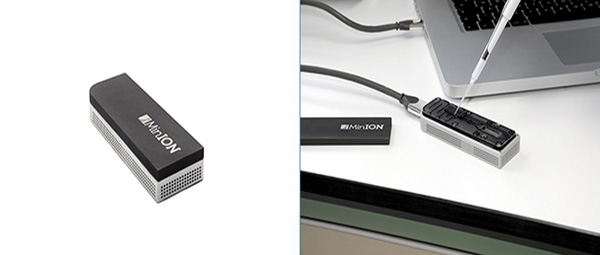Oxford Nanopore Finally Invites Researchers to Use Handheld Sequencer

Oxford Nanopore announced at the American Society of Human Genetics meeting yesterday that it will begin providing some units of its MinION handheld sequencer to selected researchers.
After delay of more than a year, the company is finally showing signs that the groundbreaking sequencer will be coming to the market. Early researchers will be selected by the company and will be able to use the equipment as soon as November. A $1,000 deposit amount is required and users will have to agree to provide feedback on the performance and quality of the smartphone sized handheld sequencers and “satisfactory” performance with test samples. Users will be provided with “sufficient” flow cells where the nanopores are formed with additional flow cells costing $999 a piece.
The finalized smartphone sized MinION sequencers are being showcased at the ongoing American Society of Human Genetics meet. The highly anticipated (and equally feared by competitors) device using the novel strand sequencing technology is touted as the next big step in next-generation gene sequencing. It promises to bring down the time and cost of sequencing to less than a day for human genomes at a cost of less than $1,000. Other benefits include longer reads, real-time analysis and simple workflows.
The company hasn’t yet announced when will the MinION be available for sale, nor the bigger GridION system. It is uncertain if the company has been able to improve on the 4% error rate, when compared to the 1% to 0.1% error rates in other NSG systems from Ilumina and Roche. MinION contains the disposable sensor chip, the Application Specific Integrated Circuits (ASICs) and the nanopores. Connects directly to a laptop or PC and can run in realtime either on Oxford Nanopore’s own bioinformatic solutions or user’s own analysis software.
You can signup for the program from here in late November.


